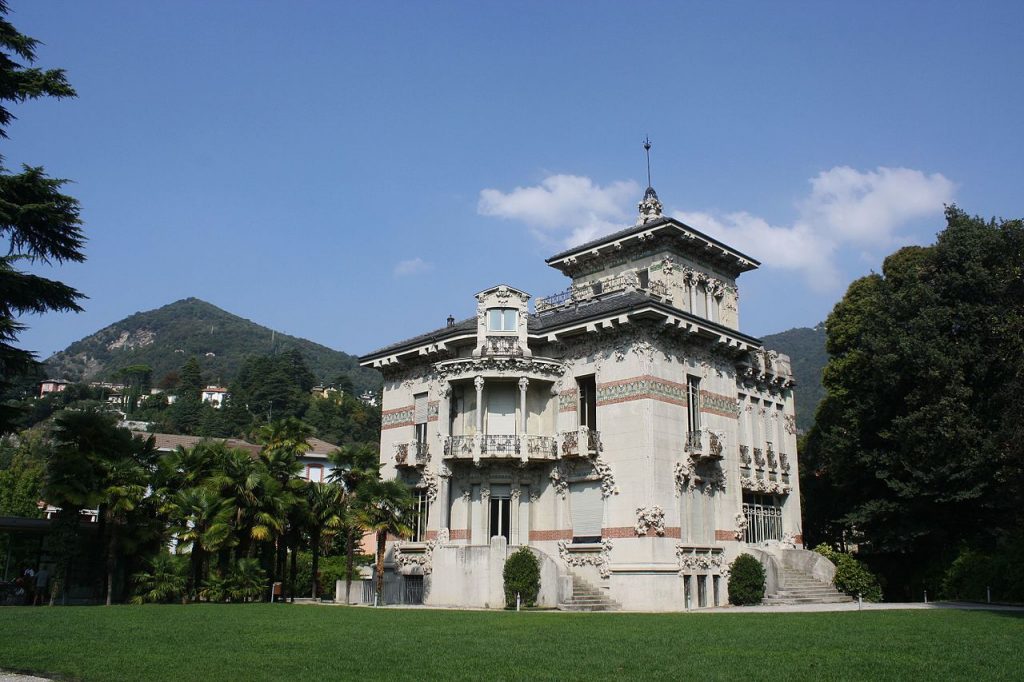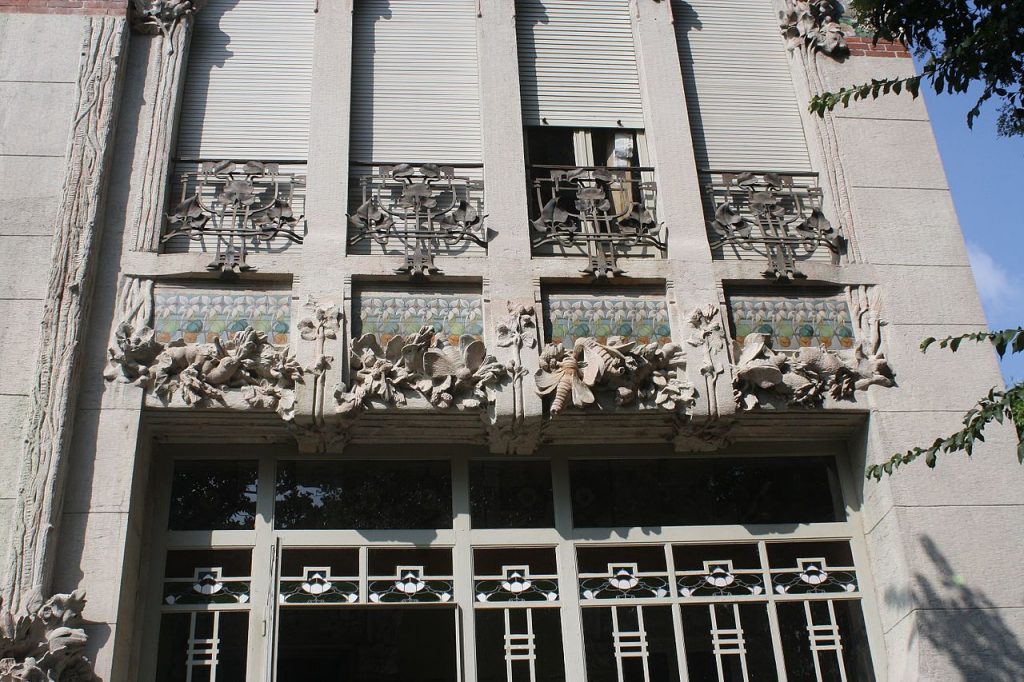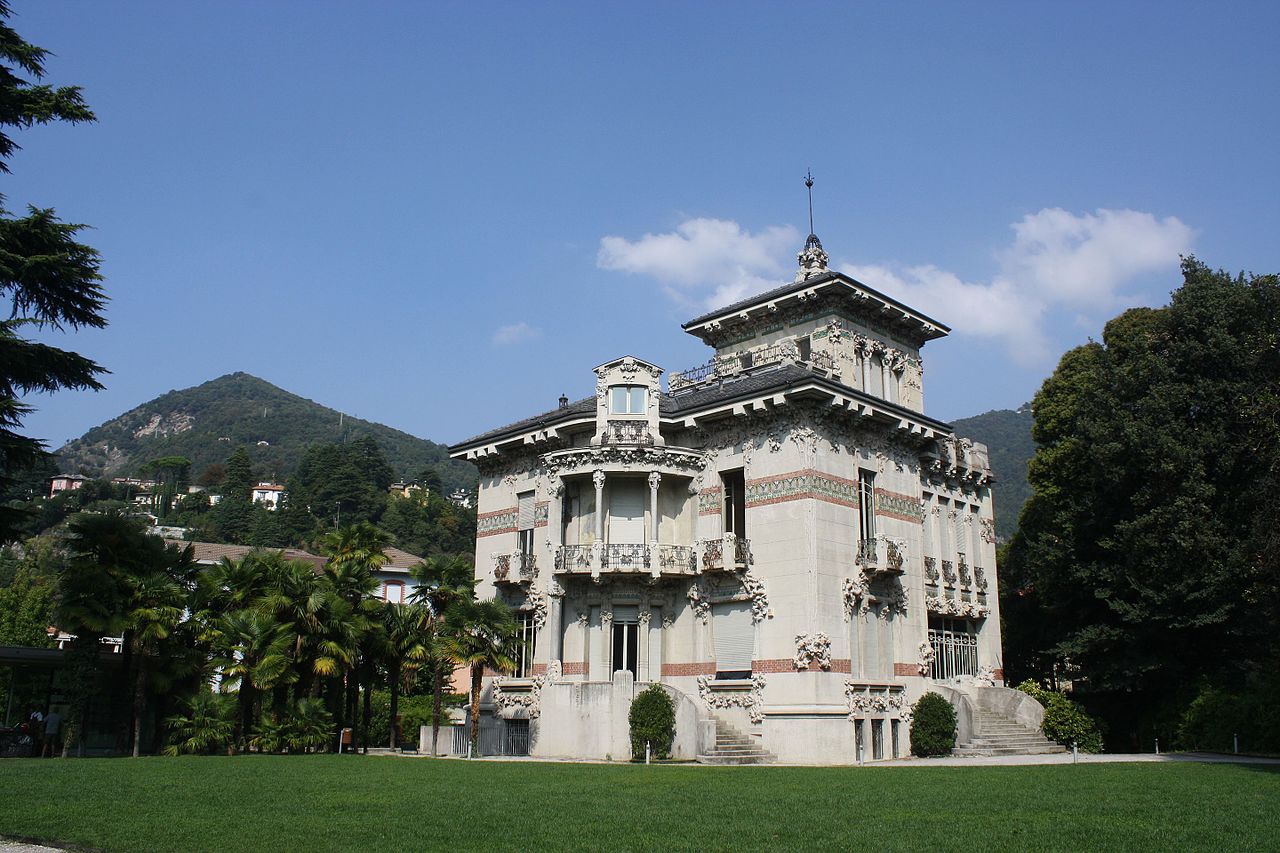In Cernobio, in the province of Como, surrounded by a simple garden, it overlooks the modern city street. As if unaware of the beauty that distinguishes it from contemporary structures. Nevertheless Villa Bernasconi does not escape the eye. Rather it captures it letting the viewer get lost in the rich decoration of its profiles.
Villa Bernasconi, liberty excellence
Built in the early 900s by the will of Davide Bernasconi who entrusted the project to the architect Alfredo Campanini. The villa, which certainly must have distinguished itself at the time, was born as a "fashion house". Home of its owner's ingenious personality. Bernasconi was in fact founder, at the end of the 800th century, of the silk textile industry of Cernobbio. The house was part of a workers' village, a model that reflected the entrepreneurial mentality of the period. That of the industrial paternalism, in which the architectural organization of the spaces also made explicit the business idea. In the "citadel of silk" nothing was missing. There were the workers' houses, the houses for managers and executives, the kindergarten for the children of the employees.

The close link with silk production can still be found today on the external profiles of the house. In his cement decorations the life cycle of the silkworm is represented. Mulberry leaves stand out among which the fruits peep out, and the moults of the bombix mori until the transformation into a butterfly. AND with this decorative apparatus that the villa constitutes a unicum of its kind. A liberty refined in its contents, which creates a common thread with the history of the family and the territory. The architectural façades capable of giving dynamism, sinuosity and hospitality complete the whole. And again, the masterpieces of the famous wrought iron artist Alessandro Mazzucotelli.
The house-museum
The inevitable decline of the textile industries led to their transformation. Sometimes with changes of destination and new uses. The villa remained of the Bernasconi family until 1955 and was then sold to an urban transport company which in turn rented it to the Guardia di Finanza. In 1989 the building was purchased by the Municipality for a figure that today appears to be contained. THE restorations to recover the splendor of the villa are fairly recent. In fact, they ended in 2013 following eight years of work. Thanks to these efforts, the image of a singular Art Nouveau residence with a highly communicative impact is restored.

The interior spaces preserve the staircase with wrought iron and cement decorations, polychrome stained glass windows and a richly elaborated veranda-library. In 2017 the house is ready to open its doors to the public. This is the year in which the museum is organized. Abundant with multimedia elements of the most particular, such as the chest of drawers tells stories, it allows the visitor to grasp the spirit of the past. Between historical introductions and period testimonies of former employees and family members. A way to get to know those who had lived that context from different perspectives. Villa Bernasconi is certainly an opportunity not to be missed, a gem that wishes to tell its stories to the modern visitor.





